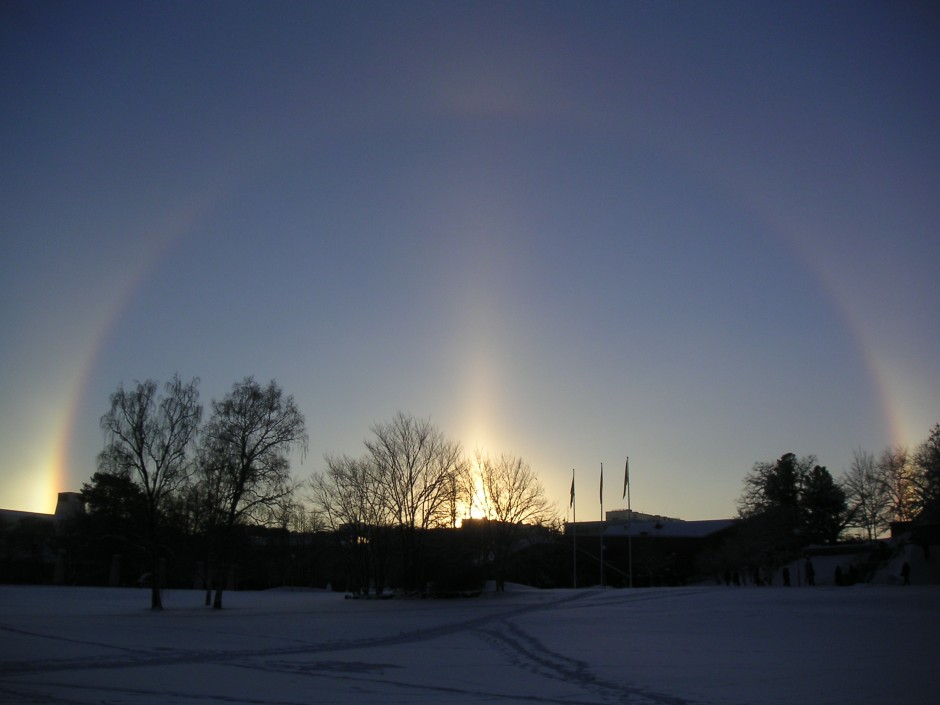
Halo by Farahnaz Khosrawi, distributed by the EGU under a Creative Commons License
“Ring around the sun or moon brings rain or snow upon you soon.” Before the development of meteorology, visible atmospheric phenomena, such as halos, were used to forecast the weather. Though meteorological prediction has come a long way since then, these extraordinary halos really do appear in the sky on otherwise ordinary days, a lesson learned by Farahnaz Khosrawi when she saw the sun rise on a cold Swedish morning.
Khosrawi, an Associate Professor at the Department of Meteorology, University of Stockholm, recalls her trip to the office, “A wonderful halo was visible [around the sun] in the early morning of 8 December 2010. It was a very cold winter morning in Stockholm with temperatures around -20 C. The picture was taken in front of the university on my way to work. I couldn’t believe my eyes when I saw this wonderful huge halo. I was so glad that I had my camera with me. I never have seen such an halo before and who knows when I will have the chance to see one again.”
Like rainbows, halos are beautiful optical phenomena. However, unlike rainbows, where sunlight hits atmospheric water droplets, halos are formed when light is reflected and refracted by ice crystals in the thin, wispy cirrus clouds high up in the upper troposphere (5–10 km altitude). Khosrawi explains, “The shape and size of the ice crystals determines the appearance of the halo. The halo produced by the ice crystals appears as an arc or spot in the sky. Many halos occur near the sun but others appear elsewhere and can even appear in the opposite part of the sky.”
Two ‘sundogs’, another atmospheric phenomena that takes the shape of two bright spots of light to the left and right of the sun, are also visible in this stunning picture.
Imaggeo is the online open access geosciences image repository of the European Geosciences Union. Every geoscientist who is an amateur photographer (but also other people) can submit their images to this repository. Being open access, it can be used by scientists for their presentations or publications as well as by the press. If you submit your images to imaggeo, you retain full rights of use, since they are licenced and distributed by EGU under a Creative Commons licence.
